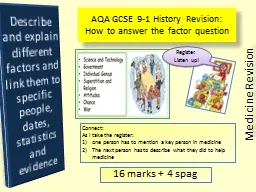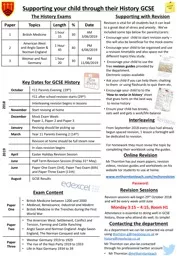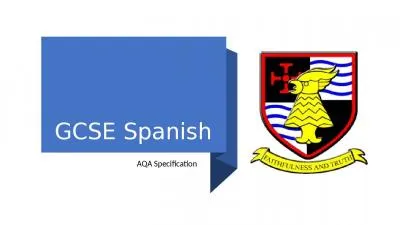PPT-AQA GCSE 9-1 History Revision: How to answer the factor question
Author : PrincessPeach | Published Date : 2022-08-03
16 marks 4 spag Describe and explain different factors and link them to specific people dates statistics and evidence Connect As I take the register one person
Presentation Embed Code
Download Presentation
Download Presentation The PPT/PDF document "AQA GCSE 9-1 History Revision: How to an..." is the property of its rightful owner. Permission is granted to download and print the materials on this website for personal, non-commercial use only, and to display it on your personal computer provided you do not modify the materials and that you retain all copyright notices contained in the materials. By downloading content from our website, you accept the terms of this agreement.
AQA GCSE 9-1 History Revision: How to answer the factor question: Transcript
Download Rules Of Document
"AQA GCSE 9-1 History Revision: How to answer the factor question"The content belongs to its owner. You may download and print it for personal use, without modification, and keep all copyright notices. By downloading, you agree to these terms.
Related Documents














